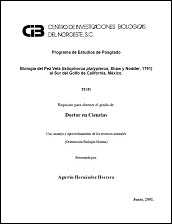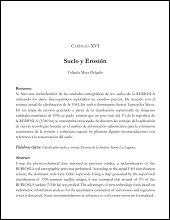Efecto del nivel de proteína y energía en la actividad antioxidante de juveniles de langosta de agua dulce Cherax quadricarinatus (von Martens, 1868)
The effect of protein and energy levels in diet on the antioxidant activity of juvenile redclaw Cherax quadricarinatus (von Martens, 1868)
Autor
EDILMAR CORTES JACINTO
ANGEL ISIDRO CAMPA CORDOVA
FELIPE DE JESUS ASCENCIO VALLE
HUMBERTO VILLARREAL COLMENARES
RAMON JAIME HOLGUIN PEÑA
Metadatos
Mostrar el registro completo del ítemResumen
"Se realizó un estudio para evaluar el efecto de los niveles de proteína y energía sobre el crecimiento, supervivencia
y la respuesta antioxidante de la enzima superóxido dismutasa (SOD) en juveniles de Cherax quadricarinatus. El
experimento incluyó seis dietas prácticas con tres niveles de proteína cruda (28, 35 y 40%) y dos niveles de energía
(~18 y 20 kJ·g–1). El grupo control fue alimentado con alimento comercial para camarón. La actividad SOD más alta (34.8
U·mg–1 prot.) se presentó en juveniles alimentados con 35% de proteína cruda (PC) y 18 kJ·g–1. La proteína soluble en
tejido de langosta de agua dulce alimentada con 28 y 35% de PC fue superior con respecto a los acociles del grupo
control. El mejor peso final promedio (9.23 g), la mejor ganancia en peso (788%) y el factor de conversión alimenticia
mas bajo (1.3) se presentó en acociles alimentados con 35% de PC. Se concluye que una dieta conteniendo 35% de PC
y 18 kJ·g–1 de energía es recomendada para la producción y además incrementa la respuesta inmune de los acociles
en su fase de juvenil." "This study determined the influence of dietary crude protein and energy levels on growth, survival, and antioxidant
response of superoxide dismutase (SOD) in juvenile redclaw Cherax quadricarinatus. Six practical diets containing
three crude protein (CP) levels (28, 35, and 40%) and two energy levels (~18 and 20 kJ·g–1) were tested. The control
group was fed a commercial shrimp diet. The highest SOD activity (34.8 U·mg–1 protein) occurred in the diet with 35%
CP and 18 kJ · g–1. Soluble protein in tissue of redclaw fed 28 and 35% CP increased, compared to the control. The best
mean final weight (9.23 g), weight gain (788%), and the lowest feed conversion ratio (1.3) occurred with the 35% CP
diet. We conclude that a dietary CP content of 35% and 18 kJ · g–1 is recommended for production and best immune
responses in redclaw."
Colecciones
Ítems relacionados
Mostrando ítems relacionados por Título, autor o materia.
-
PROMOCIÓN DEL PERIFITON PARA EL CULTIVO DE CAMARÓN BLANCO: HACIA UNA ACUICULTURA ECOLÓGICA
DOMENICO VOLTOLINA LOBINA; JUAN MANUEL AUDELO NARANJO; MARIA DEL ROSARIO PACHECO MARGES -
Suelo y Erosión
YOLANDA LOURDES MAYA DELGADO


